Sidrah Javed
System Design and Parameter Optimization for Remote Coverage from NOMA-based High-Altitude Platform Stations (HAPS)
Jun 04, 2024Abstract:Stratospheric solar-powered high-altitude platform stations (HAPS) have recently gained immense popularity for their ubiquitous connectivity and resilient operation while providing/catalyzing advanced mobile wireless communication services. They have particularly emerged as promising alternatives for economic coverage of remote areas in the world. This makes them suitable candidates to meet the UN Sustainable Development Goals (SDG-2030) for global connectivity. HAPS can provide line-of-sight (LoS) communications to the ground users in its ultra-wide coverage area. We propose to divide these users into multiple user groups and serve each group with a high-density flexible narrow spot beam, generated by the phased array antennas mounted on HAPS, to achieve high data rates. We carry out the user association and power allocation in a downlink (DL) non-orthogonal multiple access (NOMA) scheme in each user group. To improve the system performance, a sum rate maximization problem is formulated by jointly designing user grouping, user association, beam optimization, and power allocation while guaranteeing the quality-of-service (QoS) for users with limited power budget. We further investigate the outage performance of the users with the proposed approach as compared to the traditional scheme. Our findings reveal the significance of the joint design of communication parameters for enhanced system performance, optimum energy utilization, and resource allocation.
Optimizing Air-borne Network-in-a-box Deployment for Efficient Remote Coverage
Jun 04, 2024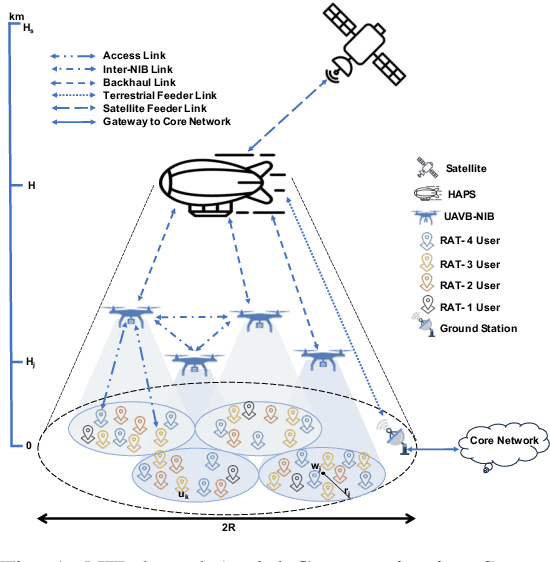
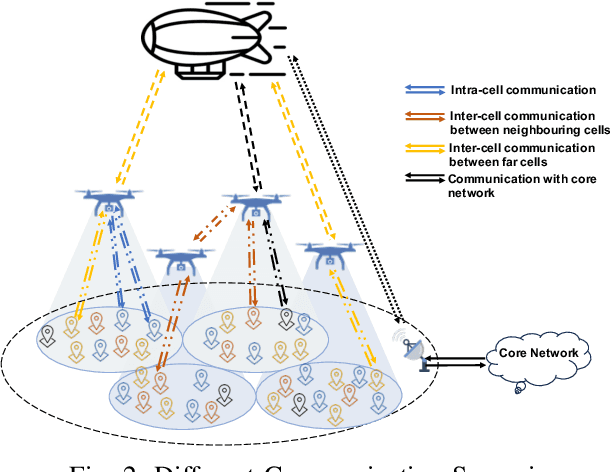
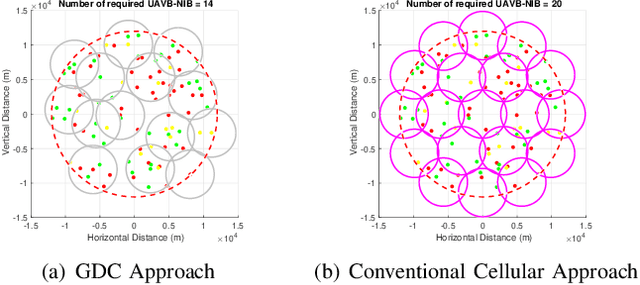

Abstract:Among many envisaged drivers for the sixth generation, one is from the United Nations Sustainability Development Goals 2030 to eliminate digital inequality. Remote coverage in sparsely populated areas, difficult terrains, or emergency scenarios requires on-demand access and flexible deployment with minimal capex and opex. In this context, network-in-a-box (NIB) is an exciting solution that packs the whole wireless network into a single portable and re-configurable box to support multiple access technologies such as WiFi/2G/3G/4G/5G etc. In this paper, we propose low-altitude platform stations (LAPS) based NIBs with stratospheric high-altitude platform station (HAPS) as backhaul. Specifically, backhaul employs non-orthogonal multiple access (NOMA) with superposition coding at the transmitting HAPS and successive interference cancellation (SIC) at the receiving NIBs, whereas the access link (AL) employs superposition coding along with the regularized zero-forcing (RZF) precoding at the NIB in order to elevate the computational overhead from the ground users. The required number of airborne NIBs to serve a desired coverage area, their optimal placement, user association, beam optimization, and resource allocation are optimized by maximizing the sum rate of the AL while maintaining the quality of service. Our findings reveal the significance of thorough system planning and communication parameters optimization for enhanced system performance and best coverage under limited resources.
A Multidisciplinary Approach to Optimal Communication and Flight Operation of High Altitude Long Endurance Platform
Mar 01, 2022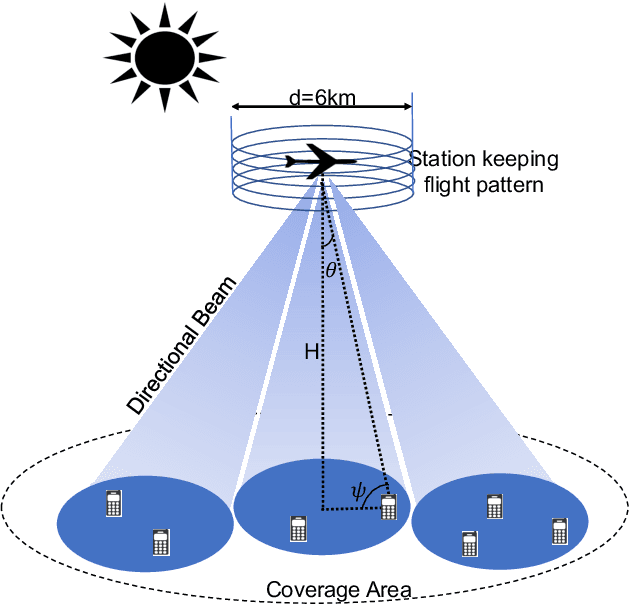
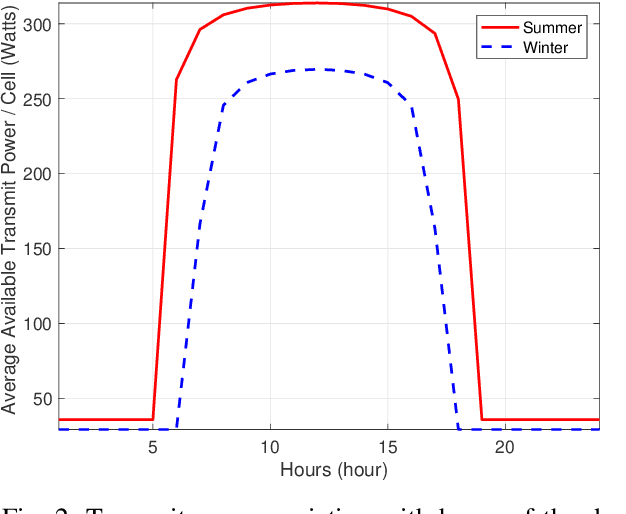
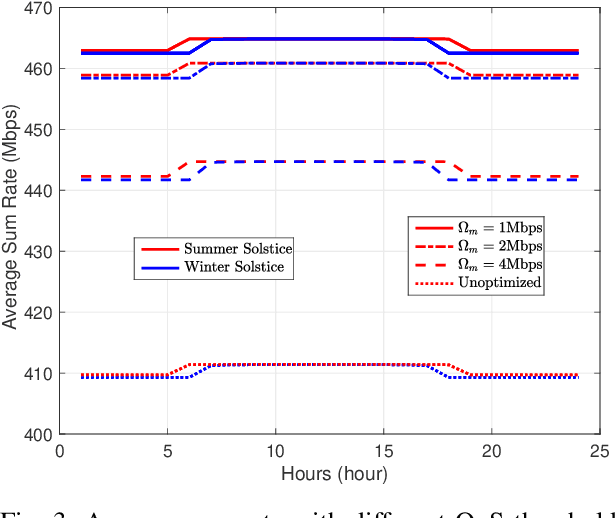
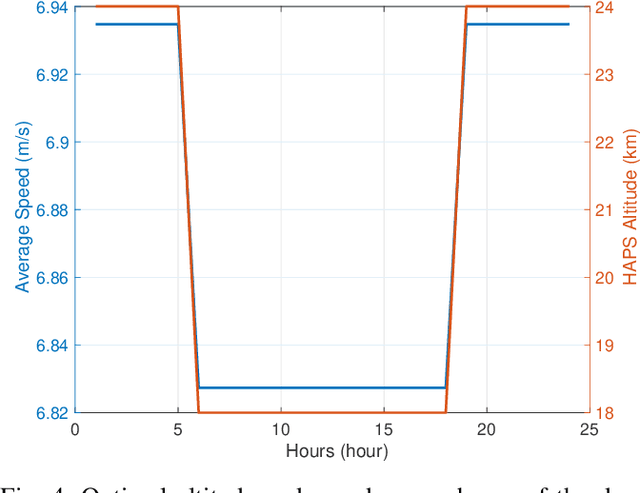
Abstract:Aerial communication platforms especially stratospheric high altitude pseudo-satellite (HAPS) has the potential to provide/catalyze advanced mobile wireless communication services with its ubiquitous connectivity and ultra-wide coverage radius. Recently, HAPS has gained immense popularity - achieved primarily through self-sufficient energy systems - to render long endurance characteristics. The photo voltaic cells mounted on the aircraft harvest solar energy during the day, which is partially used for communication and station keeping, whereas, the excess is stored in the rechargeable batteries for the night time operation. We carried out an adroit power budgeting to ascertain if the available solar power can simultaneously and efficiently self-sustain the requisite propulsion and communication power expense. We propose an energy optimum trajectory for station-keeping flight and non-orthogonal multiple access (NOMA) for users in multicells served by the directional beams from HAPS communication system. We design optimal power allocation for downlink (DL) NOMA users along with the ideal position and speed of flight with the aim to maximize sum data rate during the day and minimize power expenditure during the night while ensuring quality of service. Our findings reveal the significance of joint design of communication and aerodynamics parameters for optimum energy utilization and resource allocation.
 Add to Chrome
Add to Chrome Add to Firefox
Add to Firefox Add to Edge
Add to Edge